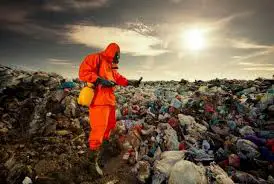The waste minimisation is based on different techniques. These techniques are classified as shown in the figure below.

Fig.: Schematic Diagram of Waste Minimisation Techniques
1. Source Reduction
Under this category, four techniques of WM are briefly discussed below:
Good Housekeeping– Systems to prevent leakages & spillages through preventive maintenance schedules and routine equipment inspections.
Read Also : Practical Applications of Integrated Waste Management for Rural Communities
Also, well-written working instructions, supervision, awareness and regular training of workforce would facilitate good housekeeping.
Process Change: Under this head, four CP techniques are covered:
Input Material Change – Substitution of input materials by eco-friendly (non-toxic or less toxic than existing and renewable) material preferably having longer service time.
Better Process Control – Modifications of the working procedures, machine-operating instructions and process record keeping in order to run the processes at higher efficiency and with lower waste generation and emissions.
Equipment Modification – Modification of existing production equipment and utilities, for instance, by the addition of measuring and controlling devices, in order to run the processes at higher efficiency and lower waste and emission generation rates.
Technology Change – Replacement of the technology, processing sequence and/or synthesis route, in order to minimise waste and emission generation during production.
2. Recycling
On-Site Recovery and Reuse – Reuse of wasted materials in the same process or for another useful application within the industry.
Production of useful By-product – Modification of the waste generation process in order to transform the wasted material into a material that can be reused or recycled for another application within or outside the company.
Read Also : 8 Guiding Principles of Integrated Waste Management (IWM)
3. Product Modification
Characteristics of the product can be modified to minimise the environmental impacts of its production or those of the product itself during or after its use (disposal).

